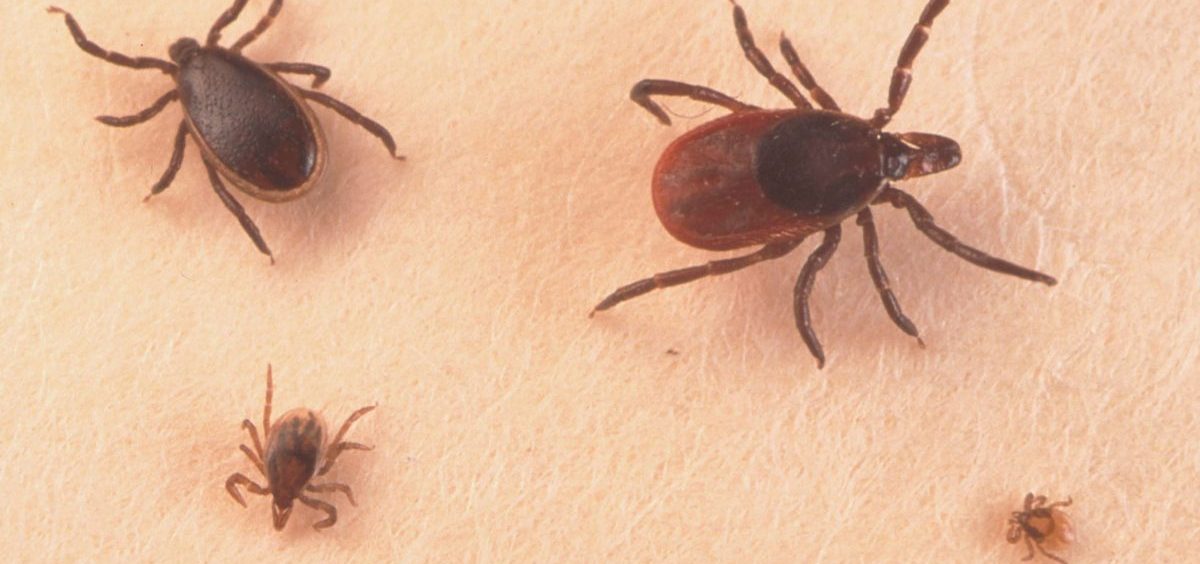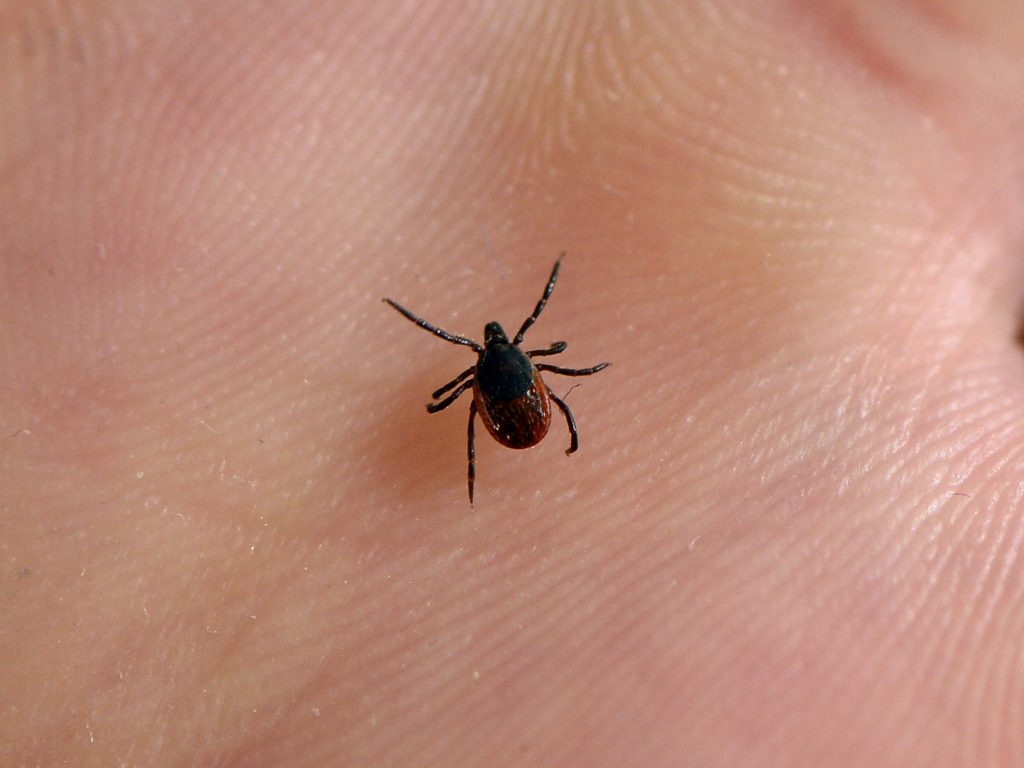News

Sun’s out, ticks out. Lyme disease-carrying bloodsucker season is getting longer
By: Vanessa Romo | NPR
Posted on:
WASHINGTON (NPR) — Spring is here and temperatures are heating up. That means cases of tick-borne illnesses, particularly Lyme disease, are on the rise in the U.S. And the problem is only being exacerbated by prolonged warmer weather across a wider swath of the country, driven by climate change.
In the Northeast, upper Midwest and northern Pacific Coast, the warming climate enables ticks to become active earlier in the spring and then remain active later into the autumn or winter months, extending the window of tick-borne disease risk each year.
With that in mind, NPR is here to help you avoid blacklegged ticks that cause Lyme disease and offer tips on what to do if you’ve been bitten.
What is Lyme disease and how is it transmitted?
Blacklegged ticks, also called deer ticks, are not insects, but rather arachnids, and they can carry more than a dozen rare diseases, including anaplasmosis, which is a bacterial infection that in extreme cases can cause respiratory failure, organ failure, bleeding problems and even death. They can also transmit hard tick relapsing fever, Powassan and Heartland viruses.
But the most common by far is Lyme disease. Typical symptoms of the illness include fever, chills, headache, fatigue, muscle and joint pain, swollen lymph nodes and a skin rash that often appears as a bull’s-eye or a solid red oval rash.
About 476,000 people are diagnosed and treated for Lyme disease each year in the U.S., according to estimates reported by the Centers for Disease Control and Prevention.
It’s on the rise in places where it was once fairly rare. A 2018 report by Quest Diagnostics said cases in California shot up by 195% from 2015 to 2017 and that the infection that causes the disease was found in all 50 states and Washington, D.C.
Ticks on their own do not carry the bacterium that causes Lyme. For that to happen, they need to draw blood from a mammal host that can harbor B. burgdorferi. On the East Coast, that is commonly deer and white-footed mice. In California, that would include deer, as well as western gray squirrels, voles and mice.
An infected tick latches onto a human by digging its mouth into the flesh where it can feast for three to 10 days, depending on whether it’s a young tick or an adult female. It takes at least 24 hours before Lyme bacteria start swimming out in the saliva the tick drips into its host.
Melissa Prusinski, a research scientist and laboratory supervisor at the New York State Department of Health, warned that it can be tricky to discern if someone’s exhibiting Lyme disease symptoms. People often mistake them for the flu or even COVID-19, she told NPR.
If you start to experience symptoms, Prusinski warned not to wait around to spot the tick or for a rash to appear before contacting a physician.
For one, ticks, especially if they’re in the nymph stage, can be really hard to see. They can be the size of a poppy seed or as tiny as a period on a computer screen.
Second, “not everybody has the rash,” she explained, adding that “sometimes the rash is in an area that you can’t easily see, like on the scalp.”
“It’s better to be safe than sorry, especially if you have spent time outdoors and know that there’s the potential that you could have received the tick bites,” she advised. In such cases, she suggests seeing a doctor as quickly as possible and mentioning that you might have a tick-borne illness.
How to remove a tick

“One of the things that [researchers] have found that really reduces your risk of tick-borne illness is to bathe or shower as soon as possible after going indoors,” Prusinski said. Ideally, she added, that would be within two hours.
“That helps to either wash off ticks that haven’t become attached, or you’re more easily more apt to find ticks that may be on you because you can do a full body tick check.”
And don’t forget about your clothes. Experts say 15 minutes in a dryer on high heat is enough to kill any remaining tourist ticks.
If you do find a tick on your body, don’t panic.
Just because you may have been bitten, it doesn’t mean you’ve contracted Lyme disease. The New York State Department of Health says in most cases, a tick must be attached for 36 hours or more before the bacteria can be transmitted.
The safest way to pluck one off your body is with a pair of fine, pointed tweezers.
“It’s best to grab the tick as close to the skin as possible, near the head or mouthparts where it’s going into the skin, and then pull slowly and steadily in a direction away from the surface,” Prusinski said.
Once it’s out, wash the bite with an antibiotic soap or rubbing alcohol. After that, note the date of bite and monitor the bite site for signs of a rash or other symptoms.
What you do not want to do is to grab the tick with your bare hands and squeeze. And definitely do not attempt to force the tick out by applying home remedies, including Vaseline, fire, or rubbing alcohol. While those may cause the tick to pull itself out of the skin, they can also potentially increase the risk of a tick-borne illness.
Most of the bacteria and other pathogens that cause the potentially deadly illness live in the gut of the tick, and when it is irritated it can regurgitate its contents into the skin, Prusinski said.
And after it’s been removed, don’t throw it away!
Lia Gaertner, director of education and outreach for the Bay Area Lyme Foundation, recommends wrapping it in a moist paper towel, putting it in a plastic sandwich bag, and dropping it in the mail to a tick testing laboratory. Within three days, she said, they can tell what kind of tick it was, how long it had been feeding, and what kind of diseases it was carrying. “That’s super important information for people to share with their doctors,” Gaertner said.
Other steps to follow to avoid ticks altogether
Hikers and outdoor enthusiasts should swap out dark pants or leggings for light-colored clothing to make it easier to see even the tiniest creatures. People heading outside can also use permethrin tick repellent on bags, shoes and socks, which should always be pulled over pants cuffs to prevent direct access to one’s legs.
Keeping the backyard tidy can also help reduce ticks in your yard.
Ticks live in forested areas at ground level and in low vegetation. They generally move around the landscape by hitching a ride on animals that they also feed on, including mice, chipmunks, birds, as well as white-tailed deer.
Prusinski suggests raking up and removing fallen leaves, mowing the lawn, and frequently clearing tall grass and brush from around your home. If you’ve got bird feeders, she said it’s safest to move them to the edge of the yard.
“That’ll keep the rodents and other animals that are attracted by the birdseed at the edge instead of in the middle of your lawn,” she said.
9(MDU1ODUxOTA3MDE2MDQwNjY2NjEyM2Q3ZA000))

